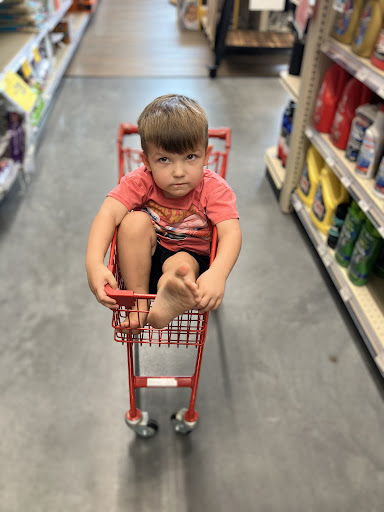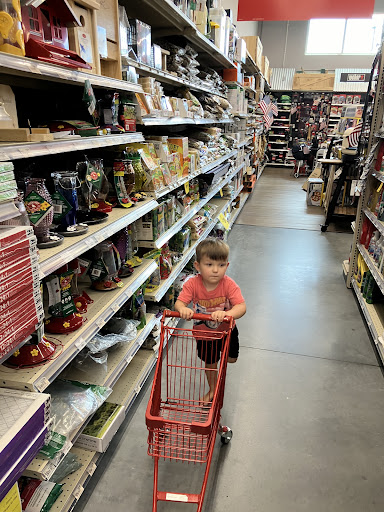Hot water heater parts: Top 4 Fixes
Understanding Your Hot Water Heater’s Core Components
When your hot water disappears, understanding hot water heater parts is key to restoring comfort. The main components of a water heater vary slightly between electric and gas models, but some parts are universal.
Here are the primary components:
- Universal Parts:
- Cold Water Inlet
- Hot Water Outlet
- Dip Tube
- Temperature and Pressure Relief Valve (T&P Valve)
- Drain Valve
- Sacrificial Anode Rod
- Electric Water Heater Specific Parts:
- Heating Elements (Upper and Lower)
- Thermostat
- Power Supply
- Gas Water Heater Specific Parts:
- Gas Burner
- Pilot Assembly (with Thermocouple)
- Gas Valve
- Flue Baffle
- Draft Hood
When your water heater breaks, you need to act fast. Knowing what makes it tick helps you fix issues quickly and keep the hot water flowing.
This guide will walk you through the essential components of your water heater. We’ll show you why quality replacement parts matter and how to keep your system running smoothly.
The helpful team at Lowcountry Ace has extensive experience sourcing and stocking quality hot water heater parts, ensuring you find exactly what you need for reliable hot water. Let’s make sure you never face a cold shower again.
Your Guide to Water Heater Components and Repairs
Understanding Your Water Heater
An ice-cold shower is a wake-up call nobody wants. Whether you have no hot water, lukewarm showers, or puddles around your unit, it’s time to get familiar with your hot water heater parts.
You don’t need to be a plumbing wizard to understand the basics. This knowledge is valuable because hot water is essential for daily life, from showers to laundry.
DIY repairs offer amazing benefits. Beyond saving money, you restore comfort, gain skills, and extend your water heater’s lifespan. Plus, there’s something satisfying about solving a problem with your own two hands.
Why Quality Parts Matter
When it comes to water heater repairs, cutting corners on parts is a bad idea. You might save money upfront, but you’ll pay for it later when things go wrong again.
Quality hot water heater parts matter. They ensure optimal performance and efficiency, as your system was designed with specific components in mind. When parts fit properly, your system runs smoothly and uses energy more effectively.
Safety is another huge factor. Water heater parts face intense heat and pressure. Cheap components can fail unexpectedly, creating dangerous situations, while quality parts are built to handle these demanding conditions, giving you peace of mind.
Durability makes quality parts a smart investment. A generic part might fail sooner, but quality components, especially OEM (Original Equipment Manufacturer) parts, are designed to last and prevent frustrating repeat breakdowns.
The helpful team at Lowcountry Ace understands the importance of stocking reliable hot water heater parts that you can trust. When you choose quality, you’re investing in consistent hot showers and fewer repair emergencies.
Anatomy of a Water Heater: Universal and Type-Specific Parts
While the core function of a water heater is to provide hot water on demand, the mechanisms vary between electric and gas models. However, many essential hot water heater parts are universal.
Universal Components Found in Most Water Heaters
Let’s start with the components you’ll find in almost any tank-style water heater:
- Tank: This large, insulated reservoir holds the water to be heated, with common sizes ranging from 20 to 80 gallons.
- Insulation: This foam material surrounds the tank to retain heat and reduce energy loss.
- Dip Tube: This tube delivers incoming cold water to the bottom of the tank, ensuring it gets heated efficiently before rising.
- Hot Water Outlet: This pipe at the top of the tank delivers hot water to your home.
- Cold Water Inlet: This pipe brings cold water into the tank and connects to the dip tube.
- Drain Valve: Located at the bottom, this valve lets you drain the tank to flush out sediment.
- Sacrificial Anode Rod: This metal rod (magnesium, aluminum, or zinc) attracts corrosive elements, sacrificing itself to protect the tank from rust. It should be replaced every 3-5 years.
- Temperature & Pressure (T&P) Relief Valve: A critical safety device, the T&P valve automatically releases water if the temperature exceeds 210°F or pressure exceeds 150 PSI, preventing dangerous buildup. It should be tested annually.
- Overflow Pipe: This pipe connects to the T&P valve and safely directs discharged water to a drain.
Exclusive Parts for Electric Water Heaters
Electric water heaters have their own specialized hot water heater parts:
- Heating Elements (Upper and Lower): These are the workhorses of an electric model. The upper element provides a quick boost of hot water, while the lower element heats the bulk of the water. Lukewarm water often points to a faulty upper element, while a limited hot water supply suggests a problem with the lower one. They typically last 10-15 years.
- Thermostat: Electric models usually have two thermostats (one per element) to control water temperature. A failed thermostat can cause the water to overheat.
- 240-Volt Power Supply: Electric water heaters require a dedicated 240-volt circuit for operation.
- High-Limit Switch (or Thermal Cut-Off): This safety switch cuts power to the heating elements if the water temperature exceeds a safe limit (around 170°F).
Exclusive Parts for Gas Water Heaters
Gas water heaters use a different set of hot water heater parts to generate heat:
- Gas Burner: Located at the bottom of the tank, this is where gas is ignited to heat the water.
- Pilot Light Assembly: The pilot light is a small, continuous flame that ignites the main burner. The assembly includes a pilot tube, ignitor, and generator.
- Thermocouple: This safety device senses the pilot light’s flame. If the flame goes out, the thermocouple signals the gas valve to shut off the gas supply, preventing leaks.
- Gas Control Valve: This valve regulates gas flow to the burner and includes the thermostat and a safety shut-off feature.
- Flue Pipe & Draft Hood: These parts form the venting system. The draft hood collects exhaust gases, which travel up the flue pipe and out of your home. Power-vented models may use a blower to assist.
[TABLE] Comparing Key Parts of Gas vs. Electric Water Heaters
Understanding the fundamental differences between these two types of water heaters can help you appreciate why specific hot water heater parts are unique to each.
| Feature | Electric Water Heater | Gas Water Heater |
|---|---|---|
| Heating Method | Electric heating elements (upper & lower) | Gas burner with pilot light or electronic ignition |
| Key Components | Heating elements, thermostats, 240V power supply | Gas burner, pilot assembly, thermocouple, gas valve |
| Energy Source | Electricity | Natural gas or propane |
| Safety Features | High-limit switch, circuit breakers | Thermocouple, gas auto shut-off, proper venting |
| Common Repairs | Heating element replacement, thermostat issues | Pilot light issues, thermocouple replacement, burner problems |
Common Hot Water Heater Parts That Require Replacement
Even the best water heaters have parts that wear out. This section covers the most common hot water heater parts that need replacement to keep warm water flowing. Knowing what to look for can save you hassle and help you tackle repairs.
Anode Rod: The Tank’s Silent Protector
The anode rod is an unsung hero among hot water heater parts. This “sacrificial” rod corrodes to protect your tank’s steel lining from rust. A “rotten egg” smell from your hot water often means the rod is working but may need replacement soon. An aluminum alloy rod can sometimes reduce this odor. Anode rods typically need replacing every 3-5 years, depending on water hardness and usage. Swapping it is a great, inexpensive DIY project (around $25 for the part) that can prevent a costly tank replacement.
Heating Elements & Thermostats: The Heart of the Heat
For electric models, the heating elements and thermostats are the heart of the system. Check these hot water heater parts first if you have cold, lukewarm, or overly hot water. The upper heating element provides the initial burst of hot water, while the lower element heats the rest. A failed upper element can mean no hot water, while a failed lower one means hot water runs out quickly. Each element has a thermostat to control temperature. A bad thermostat can cause water to be too hot or not hot enough. You can test these parts with a multimeter to find the problem. Replacing them can be a DIY task, but a new thermostat part can cost over $400.
Temperature & Pressure (T&P) Valve: The Critical Safety Device
The Temperature & Pressure (T&P) relief valve is a critical safety device, not just another part. It prevents the tank from over-pressurizing by opening if the temperature exceeds 210°F or pressure surpasses 150 PSI. A constantly dripping T&P valve is a serious warning sign—it could be a faulty valve or dangerously high tank pressure. Test the valve annually by lifting its lever. If it doesn’t release water or keeps dripping after, it needs immediate replacement. Never block a dripping T&P valve, as this can lead to catastrophic failure.
Drain Valve: For Essential Maintenance
The drain valve at the bottom of the tank is crucial for maintenance. It allows you to flush out sediment buildup, which reduces efficiency and shortens the heater’s lifespan. If your drain valve leaks or clogs, replace it. Upgrading from a plastic to a sturdy brass valve is a smart move for durability. Regular flushing (1-2 times per year) is key to your water heater’s health, and a functional drain valve is essential for this task!
The DIY vs. Pro Dilemma: Repair Costs and Safety
When your hot water heater fails, you face a common question: fix it yourself or call a pro? By understanding the costs and crucial safety steps, you can confidently decide what’s best for your home.
Typical Costs for Water Heater Parts and Repairs
So, what will this cost? A professional repair averages around $600 but can range from $90 to over $1,700, depending on the hot water heater parts needed. For the DIY enthusiast, you can save significantly on labor. A new anode rod might only cost $25, while a thermostat part could be under $400. Compared to a full replacement cost of $880 to $1,800, a DIY repair looks appealing. However, a botched job can lead to more expensive problems. Sometimes, the peace of mind from professional expertise is worth the investment.
Essential Safety Precautions
Safety is paramount when working on your water heater. Before touching any hot water heater parts, you must take precautions with electricity, gas, and hot water.
If you have an electric water heater, your first step is to go to your circuit breaker panel. Find the breaker for your water heater—it’s usually a large, double-pole 240-volt switch—and flip it to the “OFF” position.
For gas water heaters, locate the gas shut-off valve on the gas line connected to your unit and turn it to the “OFF” position.
Often, you’ll need to drain the tank. Hook up a garden hose to the drain valve at the bottom and run it to a floor drain or outside. Open the drain valve, then open a hot water faucet somewhere in your house to help it drain faster. The water can be incredibly hot, so give it time to cool before you start working.
When dealing with electrical components, use a voltage tester to double-check that there’s no current. For gas water heaters, always be aware of gas leak risks. If you smell gas, leave the area immediately and call your gas company.
While many DIY tasks are doable, repairs involving gas lines are best left to a qualified professional. Knowing when to call an expert is the sign of a smart homeowner. For more on water heater efficiency, the U.S. Department of Energy is a great resource. And for your DIY projects, having the right tools for home improvement on hand makes all the difference!
Finding and Maintaining Your Water Heater Parts
Having the right hot water heater parts is half the battle. Knowing how to find them and perform maintenance is key to extending your unit’s lifespan and ensuring consistent hot water.
How to Identify the Correct Hot Water Heater Parts
Finding the right replacement part is simple. You’ll need the model number and serial number, usually found on a label on the side of the tank.
- Check Your Owner’s Manual: Your manual often lists specific part numbers or diagrams.
- Manufacturer Websites: Many manufacturers have sections on their websites where you can enter your serial number to find compatible hot water heater parts.
- Bring Details to Your Local Store: When you visit us at Lowcountry Ace, bring your water heater’s model and serial number, or a picture of the part you need. Our helpful team can help you source the right replacement.
Where to Purchase Quality Hot Water Heater Parts
Once you know what you need, you have several options for purchasing high-quality hot water heater parts:
- Local Hardware Stores: Your neighborhood Lowcountry Ace Hardware is a fantastic resource. We stock a wide variety of common replacement parts, including heating elements, thermostats, T&P valves, and anode rods. Our knowledgeable staff can provide expert advice.
- Online Suppliers: Reputable online retailers specialize in water heater parts, but ensure they provide clear compatibility information.
- Manufacturer Direct: For specific OEM parts, going directly to the manufacturer can guarantee authenticity and compatibility.
Choosing quality parts is crucial for the longevity and efficiency of your water heater.
Maintenance Tips to Extend Part Lifespan
Regular maintenance is the best way to extend the life of your hot water heater parts and prevent costly repairs.
- Annual Flushing: Flush your tank 1-2 times per year to remove sediment that reduces efficiency and can cause corrosion. Connect a hose to the drain valve and flush until the water runs clear.
- Testing the T&P Valve: Test this critical safety valve annually. Gently lift the lever to ensure water flows out freely. If it doesn’t, or if it continues to drip, replace it immediately.
- Inspecting the Anode Rod: Inspect your anode rod every 3-5 years (more frequently with hard water). Replace it when it’s significantly corroded to protect your tank.
- Checking for Leaks: Periodically inspect for leaks around connections, the T&P valve, or the bottom of the tank. Water heater drain pans are excellent for catching leaks and preventing floor damage.
- Keeping the Area Clear: Ensure the area around your water heater is free from clutter and combustible materials for proper ventilation and easy access.
Get the Right Parts and Keep the Hot Water Flowing
You now have a solid understanding of hot water heater parts, from the anatomy of gas and electric models to common repairs and crucial safety steps. This knowledge empowers you to confidently identify issues and decide on the best path forward, keeping your home comfortable.
Maintenance is your best friend. Simple tasks like flushing the tank, testing the T&P valve, and checking the anode rod can add years to your unit’s life and prevent the shock of a cold shower.
So, whether you’re ready to tackle a repair yourself, need to track down the exact hot water heater parts for your unit, or simply want some friendly advice on the best tools for your next home improvement project, the helpful team at Lowcountry Ace is here for you. Stop by one of our convenient locations in James Island, Folly Beach, or Charleston, South Carolina. We’re always happy to help you get the job done right and keep that hot water flowing!
Lowcountry Ace Hardware: Your one-stop shop for home improvement. We offer quality products from trusted brands and expert advice from our experienced staff. Located on James Island, visit us for tools, hardware, fishing gear, power tools, building materials, grills & smokers, electrical and plumbing supplies, and more.
















